High tech interior design style is an innovative approach to decorating spaces that combines cutting-edge technology, sleek aesthetics, and functional design. It’s a style that appeals to those who love futuristic concepts and want their homes to reflect their passion for the latest advancements in technology. In this article, we’ll explore the origins, key characteristics, and essential elements of high tech interior design, along with some tips on how to achieve this style in your own home.
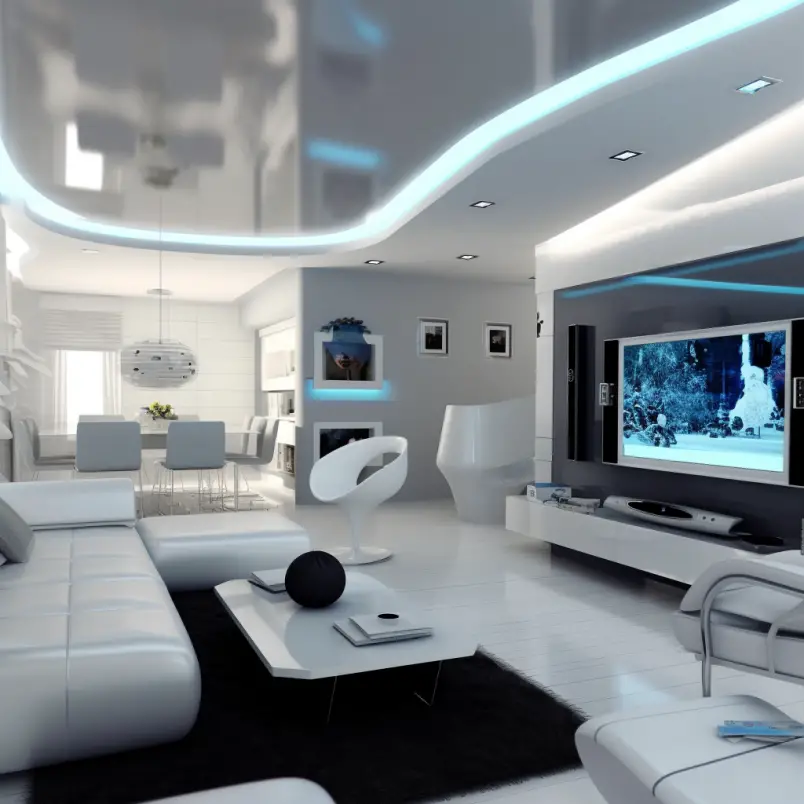
Table of Contents
What is High Tech Interior Design Style?
Origins and Influences
High tech interior design also known as Hi-Tech interior design emerged in the 1970s as a response to the rapid advancements in technology and the growing urbanization of society. Architects and designers began to incorporate technological elements into their projects, blurring the lines between form and function. This style was inspired by the principles of modernism, minimalism, and industrial design.

Key Characteristics
High tech interior design is characterized by its focus on functionality, efficiency, and the use of advanced materials and technologies. Spaces are designed to be practical, adaptable, and visually striking, often incorporating elements such as exposed structural components, modular furniture, and innovative lighting solutions.
The High Tech Materials
Metals
Metal is a key material in high tech interior design, with stainless steel, aluminum, and chrome being the most common choices. These materials offer a sleek, industrial look that pairs well with the overall aesthetic.
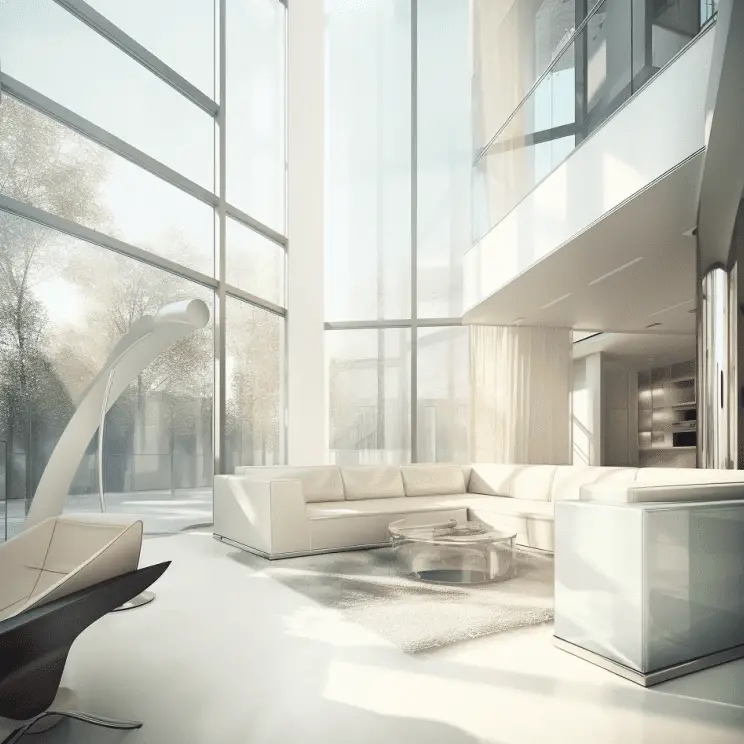
Glass
Glass is another essential material in high tech interior design. It is used for its transparency, allowing light to flow through spaces and creating a sense of openness. Glass can be used for walls, room dividers, and furniture.
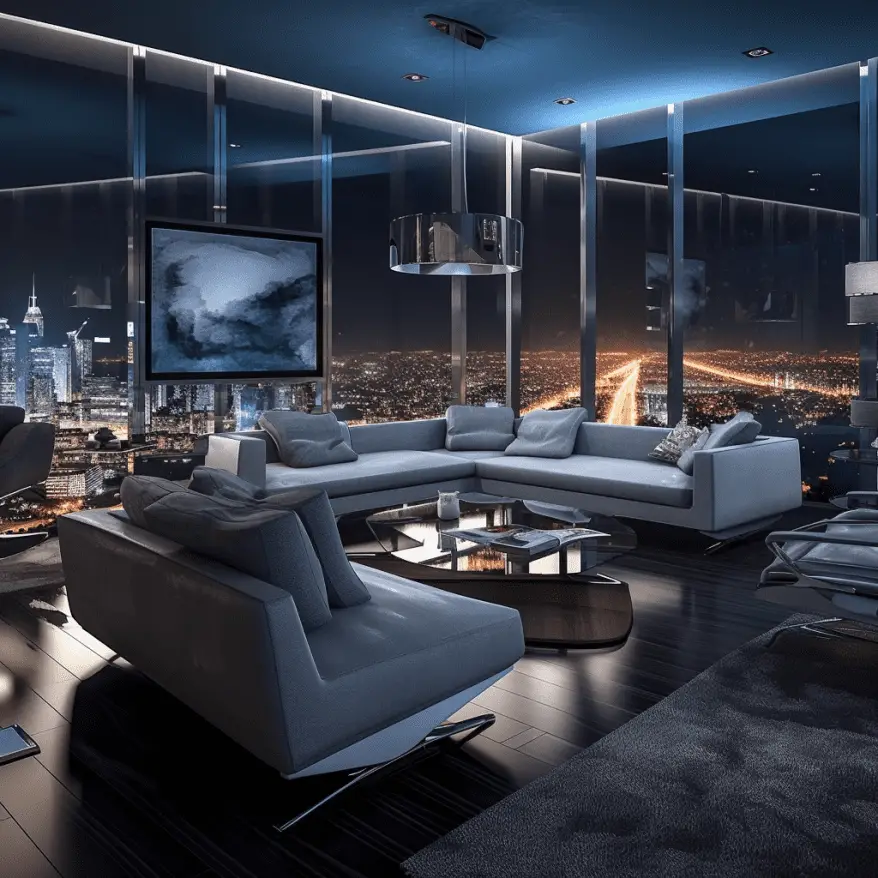
Plastics
Plastics, particularly acrylics and polycarbonates, are popular materials in high tech interior design due to their durability, versatility, and lightweight nature. They can be molded into a variety of shapes and used for everything from furniture to lighting fixtures.

The High Tech Aesthetic
Clean Lines
Hi-tech interior design is all about clean lines and geometric shapes. Simplicity is key, with clutter-free spaces and a focus on the essentials.
Minimalist Approach
Minimalism is a cornerstone of high tech design. Spaces are intentionally kept open and uncluttered, with a focus on functionality over decoration.

Innovative Lighting
Lighting plays a significant role in high tech design. Designers often use energy-efficient LED lights, recessed or track lighting, and smart lighting systems that can be controlled through apps or voice commands.
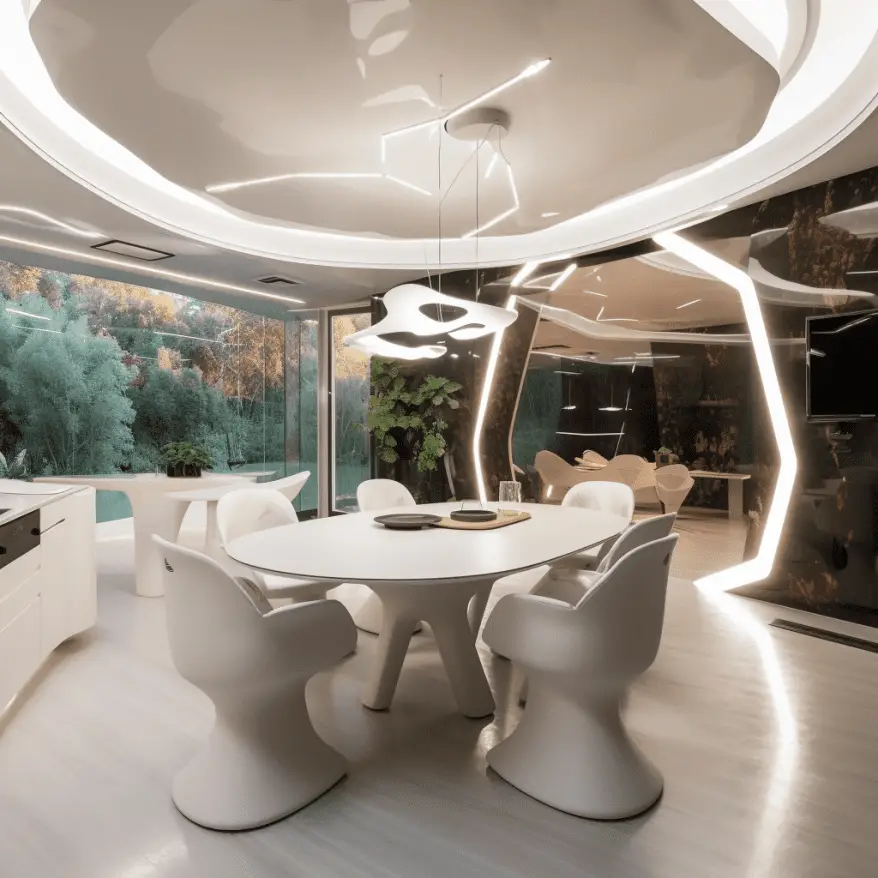
High Tech Furniture
Functionality Meets Style
High tech furniture is designed with both functionality and style in mind. Pieces are often modular, allowing for easy customization and adaptability to different spaces. Look for furniture with built-in storage, multifunctional capabilities, and innovative designs.
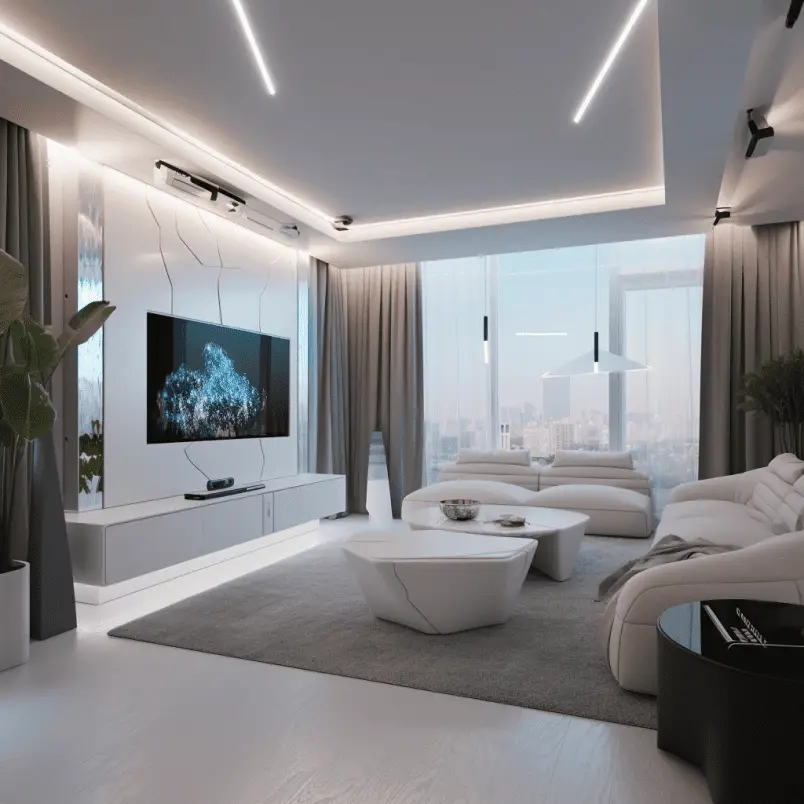
Ergonomic Designs
Comfort and ergonomics play a crucial role in high tech furniture. Chairs, desks, and other pieces are designed to support the body and promote healthy posture, making them ideal for those who work long hours at a desk or simply value their comfort.

Smart Furniture
Smart furniture is becoming increasingly popular in hi-tech interior design. These pieces incorporate technology to enhance their functionality, such as built-in charging stations, wireless speakers, or even touchscreens for controlling various features.
Incorporating Technology into High Tech Interior Design
Smart Home Systems
One of the defining features of a high tech interior is the integration of smart home systems. These systems allow you to control lighting, temperature, security, and other aspects of your home through a centralized hub or mobile app.
Entertainment Centers
High tech interior design embraces state-of-the-art entertainment options. Home theaters, gaming rooms, and advanced audio systems are all common features of high tech homes.
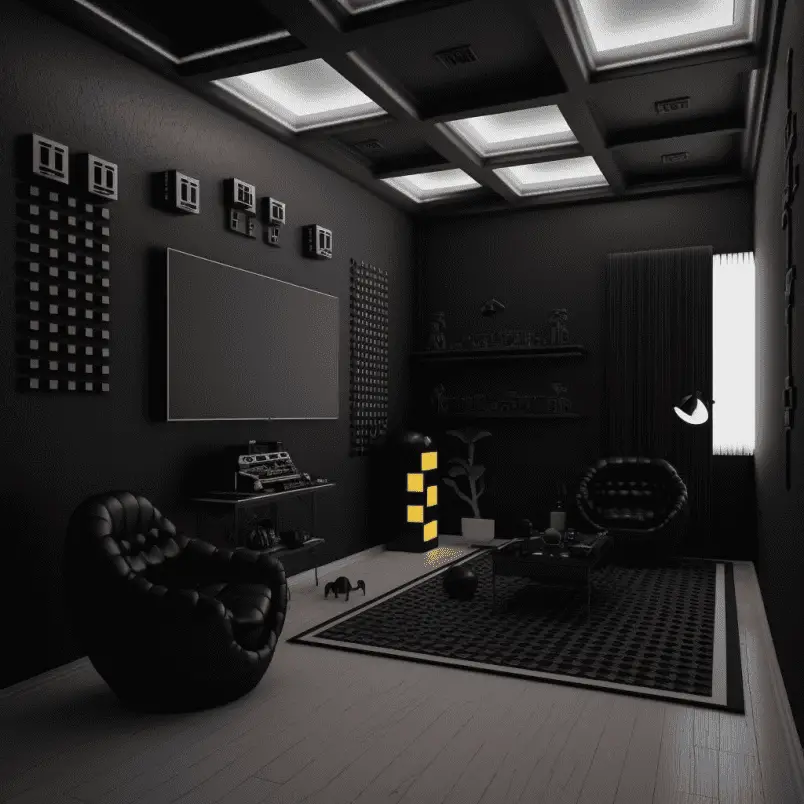
Eco-friendly Solutions
Sustainability and eco-friendliness are important aspects of high tech design. Incorporate solar panels, energy-efficient appliances, and smart thermostats to reduce your home’s environmental impact and save on energy costs.
High Tech Interior Design Tips
- Emphasize open spaces and avoid clutter.
- Choose furniture with clean lines and innovative designs.
- Opt for a neutral color palette with metallic accents.
- Use smart lighting solutions to create different moods.
- Incorporate technology seamlessly into your space.
The Pros and Cons of High Tech Interior Design
Pros:
- Highly functional and adaptable spaces.
- Emphasis on comfort and ergonomics.
- Utilizes the latest technology for convenience and efficiency.
- Eco-friendly and energy-saving features.
Cons:
- Can be expensive to implement.
- May feel cold or impersonal to some.
- Requires ongoing maintenance and updates to stay current.
Conclusion
High tech interior design is an exciting and innovative approach to creating a living space that reflects our rapidly advancing technological world. With its focus on functionality, sleek aesthetics, and cutting-edge technology, high tech design is perfect for those who want a home that is as efficient and stylish as it is comfortable. By incorporating elements like smart home systems, ergonomic furniture, and eco-friendly solutions, you can create a space that is truly ahead of its time.
FAQ
What is the best color scheme for a high tech interior design style?
A neutral color palette with metallic accents works best for high tech interiors. Think shades of gray, white, black, and silver.
How can I make my high tech interior design more inviting and warm?
Incorporate soft textures, such as rugs and throw pillows, to add warmth to your space. Additionally, use smart lighting solutions to create a cozy ambiance
